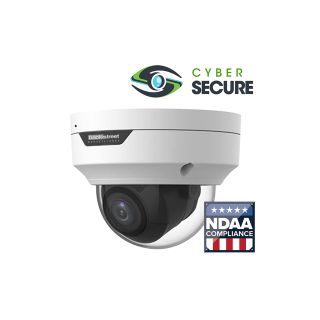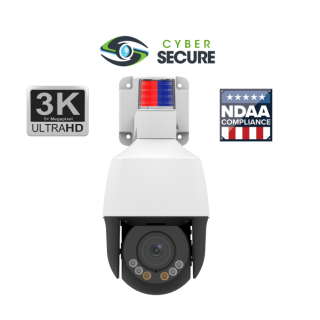Video Monitoring

Did you know most police departments will not dispatch an officer based on a signal from an alarm system? Because of the false alarm rates, most police departments require visual verification of the event before they dispatch. Well, how do you do that? You either dispatch a private security guard to the site or verify the event by remotely logging into an on-site camera system and verifying there is an intruder. This nasty little secret about the alarm industry makes alarm systems a waste of time and money. The sleek marketing of brands like SimpliSafe turns the problem on its head and presents their security cameras as a higher level of police response, when in fact it is required for police response. So why do you need an alarm system if you must have cameras to verify the alarm? If an advanced camera system could automatically monitor for human profiles and detect specific events, you eliminated the expense of an alarm system, cut out the wasted time in dispatching, and provided on-site active deterrence.
Video alarm monitoring is the wave of the future. By combining state-of-the-art CCTV camera technology and the latest advances in AI (artificial intelligence), alarm systems have effectively become obsolete and replaced with a much more reliable and effective crime deterrent.
Video Alarm Monitoring services eliminate the need for the traditional alarm system, eliminate the need for a private guard service, dramatically increase police response and they can in real-time deter crime before it happens.
How does video alarm monitoring work?
Surveillance cameras are installed on-site to view problem areas. The cameras report back to an NVR (Network Video Recorder) located in a secure area of the facility. The NVR is the brains of the system monitoring the video feeds from multiple cameras. The artificial intelligence embedded in the NVR monitors the video feeds and can detect a human or vehicle profile 99.7% of the time. Based on custom-programmed instructions alarm conditions can be generated. The NVR, being connected to the on-site broadband internet connection, transmits live video to a remote alarm monitoring facility in 2-3 seconds after an alarm condition occurs. If there is no on-site internet connection a remote cellular transmissions system such as the Sentry-Cell can be used in remote locations, the only requirements are constant power and cellular service.
Because the alarm event is humanly verified by the monitoring service, the police WILL dispatch based on their request. Live video alarm response eliminates 90% of the time delay built into a traditional alarm system response.
What triggers an alarm?
Each system is programmed to meet the customers’ concerns. The NVR is equipped with a hard drive for long-term video storage and also acts as a remote server for the end user or client. The client can access the live video feeds from the cameras and playback video via networks, smartphones, tablets, the internet, and remote computers. While providing all these services the NVR is also programmed to detect certain conditions and events such as a human profile detected, a vehicle detected, a perimeter breach, a line crossed, loitering, congregating, and many other types of events. Each camera can have its own custom programming and time schedules can be applied to each event. The system can even be programmed to identify specific individuals (facial ID) and create alarm conditions based on their positive ID.
How is a video alarm transmitted?
The NVR creates the alarm condition and uses the broadband internet connection to transmit live video to the monitoring center. The transmission usually takes 2-3 seconds. The video instantly displays on a screen with alarm condition details. The monitoring center is literally viewing and assessing the situation within 5 seconds of the alarm creation.
How does the monitoring center respond?
A monitoring center representative monitors the video feed and can trigger alarms and sirens built into the camera as well as broadcast instructions and warnings to individuals on-site. If the representative concludes a response is required, they trigger the siren, and alarm lights, and dispatch the police. The entire event is recorded on the hard drive in the video recorder. Not only does this response dramatically increase the arrest rate but it effectively stops crime before it occurs.
How does active deterrence work?
Active deterrence is possible because ADC surveillance cameras are equipped with sirens, strobe lights, a speaker, and a microphone. This gives the remote monitoring center the ability to broadcast a warning to a perpetrator informing them they are being monitored live. By triggering the siren and strobe light a monitoring representative can bring unwanted attention to what the perpetrator is doing while they are dispatching the police. This is active deterrence.
How much does video alarm monitoring cost?
Each video monitoring service standardizes certain equipment and structures its responses in unique ways they have found to be effective. Each structures their fees and costs differently but on average the fees range from $2.50 - $4.00 per camera per day. Most monitoring services require a term agreement which can be a few months to a few years. Remember that this cost is per camera and you select which cameras are monitored. You can have 16 cameras on your system but only have your 4 perimeter gate entrances remotely monitored for example. The service can be customized to the customer's security concerns and tailored to their budget.
What is required on-site for a video-monitored surveillance system?

Reliable power and a broadband internet connection with a minimum of 5mb upload speed is all you need. Most broadband internet services meet the 5mb minimum upload requirement. If there are no cost-effective internet service options (land or satellite-based), a system such as the Sentry-Cell can be used to connect the on-site surveillance system to a cellular data plan allowing access to the cameras through the cellular service. The only requirement is an on-site constant power source. Solar power is expensive because of the power requirements of all the components. A solar solution will cost $3,000 to $4500. If you have no internet service or site power a mobile surveillance unit could be a better option to provide on-site live video alarm monitoring and response.
Active Deterrence Cameras
Below are examples of ADC cameras. They are equipped with two-way audio, a siren, and a strobe light. While any IP surveillance camera can be monitored by a remote monitoring service, cameras with these features are preferred due to the ability to act in real-time, attempting to deter crime or vandalism, not just report it.
- (CS-PorchDome) 4K Active Deterrence IP Vandal Dome Camera
- - 2-way Audio, Siren, White Light
- - 4K (8 Megapixel Resolution)
- - All Advanced AI Features
- - 98ft COLOR Night Vision
Special Price $319.00 Regular Price $399.00 - (CS-FlatBack) 4mp Vandal Dome, No Cable Pigtail
- - Built-in Mic & IK10 Impact
- - 4 Megapixel Resolution
- - No Mounting Box Required
- - 100ft COLOR Night Vision
Special Price $349.00 Regular Price $479.00 - (PRO-ACTIVE) Active Deterrence 360 Degree Pan-Tilt-Zoom
- - 2-Way Audio, Siren & Lights
- - 4K, Built-in PoE
- - Motorized Zoom Lens
- - 90ft COLOR Night Vision
Special Price $399.00 Regular Price $545.00 - (CS-ProActive) 3K Pan Tilt Zoom Active Deterrence Camera
- - 2-Way Audio, Pan, Tilt, Zoom
- - 2.8-12mm Zoom Lens
- - All Advanced AI Features
- - 150ft COLOR Night Vision
Special Price $489.00 Regular Price $625.00





